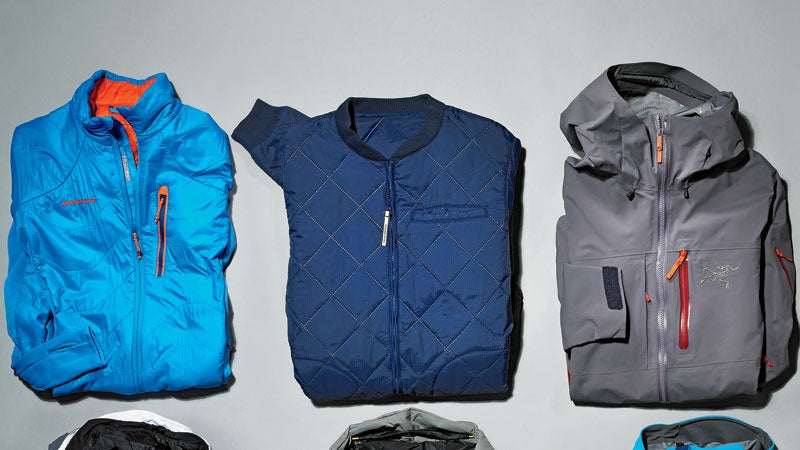Whether you’re snorkeling powder or elbowing up to the bar—every winter hobby is better with the right jacket. These six items will keep you warm no matter where you find yourself this winter.
Mammut Eigerjoch Light
Best For: Dropping the Hammer
You can wear this around town or as a warmth-boosting midlayer on chilly resort days, but it prefers charging up mountains. Stretch panels on the sides and backlet our arms swing freely during hard runs in Jackson Hole, and the high collar blocked biting wind. But the reason it’s both the most breathable jacket on these pages and way warmer than its 14 ounces suggest comes down to Polartec’s new Alpha synthetic insulation. It’s lofty for extra heat and features an airy, open structure that dumps perspiration. 14.4 oz./$300
Helly Hansen Svalbard Thermo
Best For: Mating Calls
Forty years after , the company updates it with lightweight synthetic PrimaLoft fill and a wind-and-water-resistant polyester exterior. The result isn’t as breathable or tricked out as the other insulated jackets here, but that’s not the point. The Svalbard Thermo is that rare combination of Steve McQueen style and on-slope functionality. Bonus: elastic at the cuffs and collar kept out wind as we biked from one bar to the next. 16 oz/$140
Arc’teryx Caden
Best For: Storm Skiing
The Caden is part of �����Ի� is cut a bit looser than the brand’s other ski shells. But this is no baggy freeride jacket. While there’s extra fabric around the shoulders and elbows for mobil-ity, and just enough room to comfortably contain a micro-puffy or several other insulated layers, the fit is still trim and athletic. That cut, plus an outer made of Gore-Tex Pro (a lighter, stronger, more breathable iteration of the classic fabric), is ideal for hard chargers at wet, stormy resorts like British Columbia’s Whistler. 1.3 lbs/$650
Columbia Millennium Flash
Best For: Frigid Lift Rides
Conventional wisdom says the thicker the jacket, the warmer you’ll be. That’s often true, but can be deceptively toasty. Aluminum microdots embedded in a layer of breathable polyester reflect heat back to your body, and the roomy cut and strategically placed stretch panels allow for maximum movement. If you need to shed weight, zip off the hood and powder skirt. To release heat, pull open the huge pit zips. 2.2 lbs/$330
The North Face Point It Down
Best For: Polar Conditions
Water-resistant down gives skiers the go-ahead to wear puffies without worrying (as much) about overheating or wet snow. The North Face with a slew of ski-specific bells and whistles: interior mesh drop pockets, tethered goggle wipe, helmet-size hood. Then it adds what counts. Moisture-prone zones—hem, pits, collar—get synthetic insulation, which retains heat even when wet. The rest is stuffed with 700-fill treated down, making this the warmest jacket here. 1.8 lbs/$350
Outdoor Research Valhalla
Best For: Backcountry Missions
Soft shells are comfortable, stretchy, and breathable, but they tend to value pared-down design over user-friendly features. The Valhalla is fully decked out. OR rigged this with a Recco reflector, a touchscreen-compatible smartphone pouch, and cargo pockets big enough to stash climbing skins. The most innovative features, however, are the silicone piping along the shoulders, which prevent wear from pack straps, and pit zips that extend all the way to the hemline for unmatched ventilation during climbs. 1.4 lbs/$350


